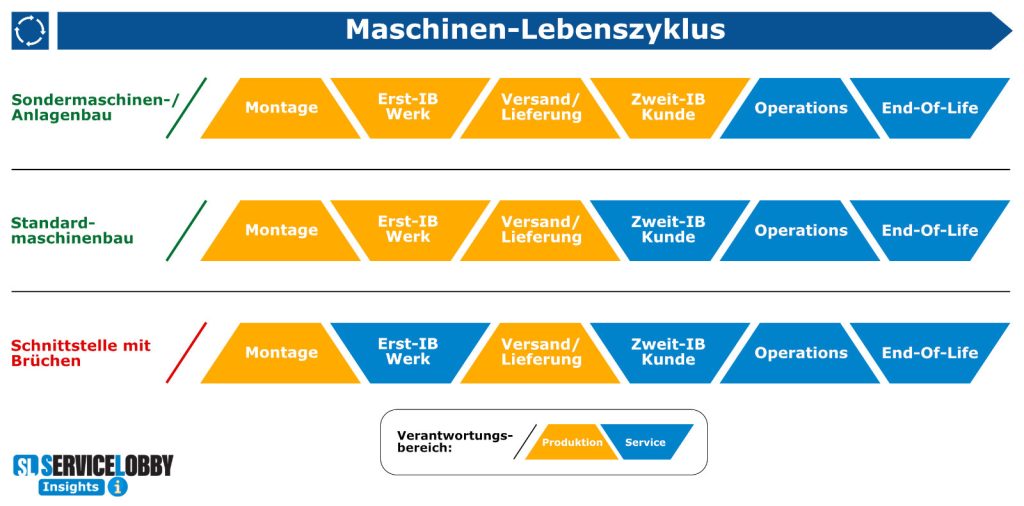
What is the service responsible for?

In practice, there are very different setups for the service, which entail very different responsibilities. This can lead to interface problems and capacities are not optimally utilized.
Everyone has a rough idea of what customer service does. In practice, however, priorities must be set. For the development of the service department, it is important to have a clear focus on what it is responsible for. This is the only way to consistently work on improving service quality in all processes relevant to service provision.
The optimal design of the service interface
In standard machine construction, service takes over from commissioning in the field. This means that assembly, initial commissioning in the factory and dispatch are carried out by our colleagues in production. Service then takes care of installation at the customer's premises. In special machine construction, on the other hand, it makes sense for the assembly team to also carry out the installation at the customer's premises. In this case, this is due to the complexity of the systems, which is why errors and delays can be avoided by having the same team from final assembly also set up the system at the customer's premises. So much for the normal case.

What happens in practice?
In practice, it is often the case that companies deviate from this approach for various reasons. This may be because, for example, the job profile of the service technician is to be made more attractive within the company, with technicians increasingly taking over commissioning in the factory. This reduces the technicians' field service and travel times. Another reason is that commissioning in the factory is excellent training for the technicians. It is also possible that the people from the assembly team are not sufficiently qualified, which is why the service team has to step in. We have illustrated this in the diagram in the third row.
What problems can arise from such an interface design?
As understandable as the reasons for deviating from the optimum interface design may be in practice, we must also discuss the problems that can arise in this context. In case of doubt, this procedure is far less efficient. If only because the handover of the machine or system between assembly and service takes place three times instead of once.
There is also a risk of missing out on growth opportunities in service if technicians are increasingly involved in activities at the factory instead of providing services at the customer's premises. And what does your service sales team do, for example, if new services cannot be sold because the necessary capacity is not available in service due to these assembly activities? This can lead to a number of disadvantages.
How do we deal with this?
Of course, the decisions that lead to such approaches are not made without good reason. After all, it is difficult to attract and retain service technicians. It is therefore understandable if you want to attract and retain them with more interesting working models. However, it should be carefully considered if you use the rare resource of service technicians for such purposes instead of assigning them to actual tasks. Moreover, this process is not always so easy to reverse if technicians have become accustomed to spending a large part of their work at home.
This is why you should also keep an eye on how the field is developing as part of the strategic orientation of your department. You should think carefully about where you want to go and which areas of responsibility actually belong to your service goals. The areas of responsibility must be consciously managed and defined. You should also place great importance on the continuous expansion of your service business.


